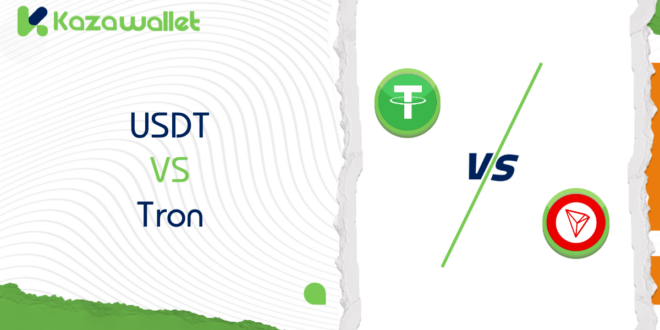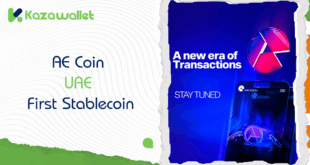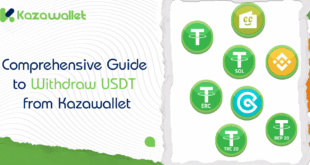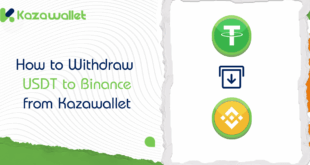Is stablecoin USDT or ambitious Tron a better bet in the mercurial universe of cryptocurrencies?
In this analysis, a critical examination of these two cryptocurrencies and the difference between USDT and Tron, with a discussion of their competing mechanism and purpose, will be conducted. Let’s take a glimpse at USDT vs Tron and evaluate their vulnerabilities and strengths in an endeavor to make your life easier and inform your decision.
Disclaimer: This is not investment advice. Before investing in Tron or any other cryptocurrency, you need to do your own research and understand the associated risks. It is always advisable to conduct ongoing research or consult a financial expert before making any investment decisions.
What is USDT?

USDT, a stablecoin, is pegged specifically to the US dollar. That peg is at its core, designed to provide a less volatile platform for investment in comparison with other cryptocurrencies with a predisposition for extreme price fluctuations. Ideally, this reduces vulnerabilities to price fluctuations in cryptocurrencies, and investors can secure their investments in case of a dip in the marketplace.
The overall premise of USDT is to offer a fairly safe refuge for investors in a volatile environment for cryptocurrencies. On the premise that one unit of USDT is backed with one unit of a US dollar in reserves with a corporation issuing a currency, the system works to have a price for USDT in a position near that of a US dollar, minimizing price fluctuations’ impact seen in other cryptocurrencies.
In times of uncertainty in the cryptocurrency market, USDT is a go-to for investors wanting to lock in funds temporarily until such times when the market stabilizes. It’s important, however, to remember that such a “haven” isn’t free of danger. There have been concerns about the accuracy and transparency of the peg between USDT and the US dollar, and whether Tether’s stated reserves can cover all of its printed USDT units.
Read more: Top 5 cryptocurrencies to invest in 2025: Invest Smartly!
What is Tron?

Tron, alternatively spelled as TRX, is a coin that is linked to a platform to revolutionize the new era of virtual entertainment. Founded in 2017, its creator, Justin Sun, aims to allow creators to post and monetize their work directly with a following, cutting out social networks and traditional streaming platforms.
With its application of blockchain technology, it can develop decentralized programs (dApps) and smart contracts, software tools that allow direct and secure communications between it and its community.
Tron’s most significant feature is its direction towards the entertainment industry, with the purpose of minimizing costs incurred via content go-betweens, such as high platform fees.
For example, singers and painters can sell to buyers directly via Tron with full royalties and payments. Tron is distinguished through speedy transactions and low cost on specific networks and hence attracts developers and buyers in general.
But criticism has been leveled at it for its fairly high level of centralization, with its founder and a group of a dozen or so involved holding a high percentage of the coins. It is price-sensitive in terms of Justin Sun, whose actions and statements can cause its price to go up and down. Despite that, Tron is a bold attempt to liberate the entertainment industry from traditional restrictions, offering a fairer platform for producers and consumers both.
Read More: USDT vs Cardano
USDT vs Tron

Main Purpose:
- USDT: When we talk about USDT vs Tron, we should mention that USDT’s primary purpose is to provide a stablecoin pegged to the US dollar, mitigating market volatility risks in the cryptocurrency world. It aims to be a haven for investors.
- Tron: Its main purpose is to build an open-source, decentralized ecosystem for Web 3.0 applications, focusing on digital entertainment applications such as video games, live streaming, and digital content. TRX is the native currency powering this system.
Technology:
- USDT: It’s not built on its own independent blockchain. Its mechanism relies on a reserve system that claims to back each USDT unit with a US dollar, a system subject to ongoing debate and scrutiny.
- Tron: When we talk about USDT vs Tron, we should mention that Tron utilizes its blockchain protocol, a relatively complex design focused on providing a decentralized platform for Web 3.0 applications, especially digital entertainment applications. The Tron network uses a Proof-of-Stake (PoS) consensus mechanism.
Usage:
- USDT: When we talk about USDT vs Tron, we should mention that USDT is primarily used as a hedge against market volatility, a medium for trading between other cryptocurrencies, and a payment method on some platforms.
- Tron: TRX is used within the Tron ecosystem to pay for services and digital content and to participate in governance. It can also be used in dApps built on the Tron platform.
Decentralization:
- USDT: USDT is largely centralized because its issuance and management depend on Tether, a private company. Despite being issued on a blockchain, control over its issuance and withdrawal rests with Tether.
- Tron: When we talk about USDT vs Tron, we should mention that tron is considered more decentralized than USDT, but not entirely. It relies on a PoS consensus mechanism, giving TRX holders some influence in governance.
Acceptance and Adoption:
- USDT: USDT enjoys widespread acceptance on global trading platforms due to its status as a stablecoin. Its prevalence in the cryptocurrency market is substantial.
- Tron: TRX has less widespread acceptance than USDT, primarily associated with the Tron ecosystem. Its adoption depends on the popularity of the Tron platform and its applications. While it has some acceptance on certain trading platforms, its reach is considerably less than USDT.
Read More: USDT vs Ripple
Risks Associated with USDT and Tron

Risks Associated with Tether (USDT)
Auditing and Transparency: Tether has undergone extensive audits by various regulatory bodies. However, a significant fine from a US regulatory agency raises questions about its future regulatory compliance and its continued commitment to the previously advertised level of transparency. This lack of consistent transparency is a major concern.
Reserves: Tether’s lack of complete transparency regarding its reserves is a significant concern. While the company insists that each USDT is backed by reserves of cash and other assets, doubts remain about the sufficiency of these reserves to cover all issued tokens and meet withdrawal requests at any time. This uncertainty poses a considerable risk.
Volatility: USDT has experienced temporary de-pegging from the US dollar, with its value occasionally dropping slightly before returning to the $1 level. These short-lived fluctuations represent a potential risk, especially given USDT’s widespread use in trading.
Security: Potential security breaches pose a significant risk to USDT investors. A hack of a digital wallet containing USDT could lead to the irretrievable loss of funds, exposing investors to potentially catastrophic financial losses.
However, some services help mitigate some of these risks. For example, a wallet like “Kazawallet” significantly facilitates USDT transactions by enabling easy and secure buying, storing, depositing, and withdrawing of USDT. This reduces the risk of dealing with untrusted platforms that might compromise your funds.
Risks Associated with Tron:
Smart Contract Risks: Smart contracts are the core of DeFi protocols on Tron. Any security vulnerabilities or errors in the code of these contracts can lead to significant financial losses for users. This is a very real risk, as even a minor coding error can be exploited by hackers or cause a system-wide malfunction. The lack of a guaranteed mechanism for correcting these errors after a smart contract is deployed further increases this risk.
Impermanent Loss: Liquidity providers on Tron’s DeFi platforms are exposed to impermanent loss. This loss occurs when the price of the assets in the liquidity pool changes. In other words, if you invest in a liquidity pool of two assets and a significant price change occurs between them
you might find that the value of your investment is lower than if you had held the assets separately. The loss is “impermanent” because it can turn into a profit if asset prices return to their original levels, but there’s a risk the loss could become permanent.
Price Volatility: The volatile nature of cryptocurrency prices poses a significant risk to users participating in DeFi activities on Tron platforms. Rapid and sharp price fluctuations can cause substantial losses in a very short time. Users must be fully aware of the risks of price volatility before participating in any activities in the cryptocurrency market, especially in the DeFi space.
Centralization Risk: Although Tron is a blockchain platform, there is a degree of centralization in some of its aspects. This poses a risk; if Tron were to be compromised or manipulated, it could negatively impact all users and assets stored on the platform.
Competition Risk: Tron faces stiff competition from other blockchain platforms, such as Ethereum, Solana, and Cardano. If Tron fails to compete effectively, it could lead to a decline in TRX’s popularity and price.
Read More: USDT vs Bitcoin
In the end:
The difference between USDT and Tron is one of purpose, technology, and level of decentralization.
Where USDT aims to mitigate fluctuations in the marketplace through a stablecoin, its transparency regarding reserves raises suspicions about its long-term steadiness, and its use for such an intention is in doubt.
Tron, in contrast, aims to build a platform for use in a decentralized manner but is not free of the centrally located factors that will contribute to its long-term success and steadiness.
Investors must understand these and the specific risks involved in both options and make a decision regarding choosing the correct one for them, about objectives and tolerance for risk.
 Blog Kazawallet
Blog Kazawallet




